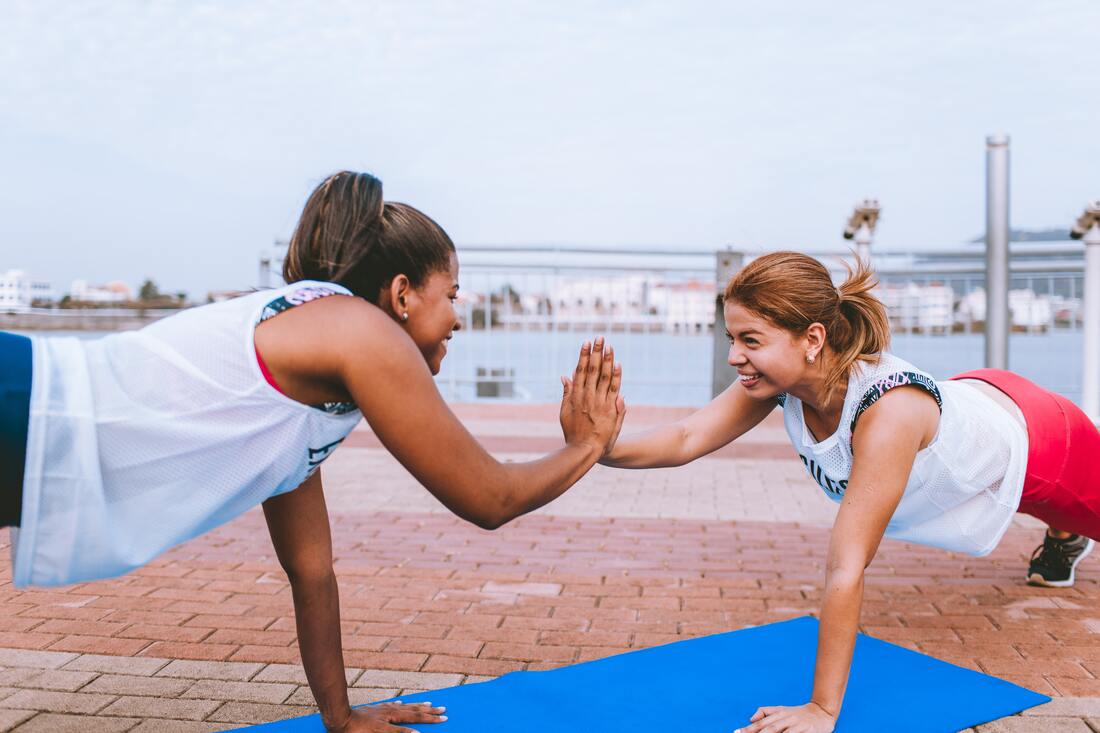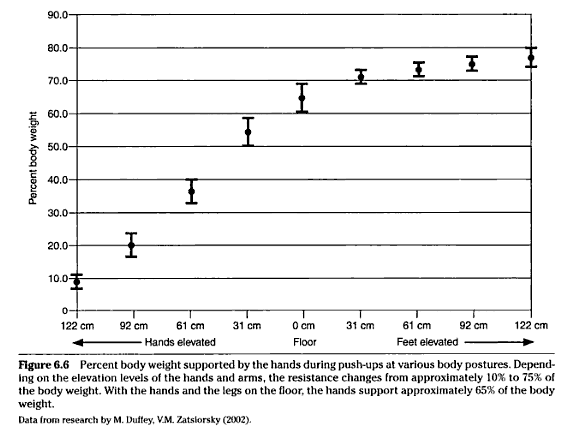|
SEARCH My Blog (Opens in new tab)
You'll be doing 20 and feeling strongWe've all seen it. The instructor announces "20 push-ups everyone", and a groan rolls through the class. "If you can't do 20 then start properly and then go to your knees!", she yells in vain—Eighty-percent of the class to straight to their knees. Frustrated, the instructor yells "if you always start in the easiest position you'll never get to the hard position". Everyone pretends that they didn't hear. That's the point. If you always start in the easiest position, you WILL never get to the hard position. And you'll never get the full benefits of the exercise. I'll show you how to get from knees to full push-ups, and it will be worth your while. Push-ups activate your entire body, and every major muscle group takes part. People always think of the benefits for the upper body, and core, but there are also significant benefits for your ankle and feet strength and stability. (I'm focusing on over 50s, here.) Doing push-ups through the full range of movement, which is what we are talking about here, strengthens and stretches your back muscles and biceps, and the complex muscles supporting your shoulders. Push-ups also give your cardiovascular system a good push along because the exercise activates so many different sets of muscles. This causes an increased need for oxygen, so the body compensates by improving blood circulation to meet this need. Improved circulation brings many benefits. How about knee-pushups? Yes, you'll get some of the benefits, about 50% of them and none related to the ankles and feet. As you age, the strength, flexibility, muscularity, and neuromuscular activation of your feet and ankles become more critical (than when you were younger). An article in the Journal of Strength and Conditioning Research identified the percent of bodyweight you lift with varieties of the push-up. In a regular push-up, you lift 64 percent of body weight, whereas, with a knee push-up, you lift 49 per cent. That's a bigger difference than you might suspect at first sight. The difference is (64 - 49) / 64 ~ nearly 25% less. If you are weight lifting and vary your load by 25% you'd feel an enormous difference. The loss of the full range of benefits, and the significance of the lighter resistance, are good reasons to want to learn how to progress to a full push-up. You are better off to be able to complete one proper push-up with good form than ten from your knees. By better off, I mean you'll get more benefit. Learn the 4-4-2 methodHere's the plan. The fundamental technique applying to this scheme of progression is what I call the 4-4-2 method. From whatever push-up position you are in do this "routine".
I'll refer to the above sequence as "the routine". If you can already do knee push-ups, with a full range of movement, shoulders back, straight back, head in a straight line with your back, then do the routine.
Being able to do one proper 4-4-2 routine is the beginning of being able to do 20 push-ups, in time. It might take you 20 weeks, but you will get there. Now and then, do a regular set instead of the 4-4-2 routine to see how many you can do. If on-knees is too hard try raised on-kneesAlternative - Raised 4-4-2 Routine. If you are struggling to do push-ups on your knees, you can use the side of your bed or something of similar height.
This may take you a couple of months - exercising 3 or 4 times a week. As above, when you can do 4 this way, with the 30-second break each time, you are ready to progress. You progress by doing knee push-ups on the floor (following the method I described in the beginning). You'll eventually be doing full push-ups and reaping the benefits. Good luck.
Follow me on Quora for more health and fitness tips. If you enjoyed this article >> Follow me Leave a comment >> Share it >> Stay healthy If you have any questions email me and I will get back to you. Latest: get your free customised fitness plan designed uniquely for you.
|
ChoicesSince I was diagnosed at 50 with Type 2 diabetes I've been learning how to do bone-building fitness training which lowers my age. You can too. It's your choice. Walter Categories
All
Archives
May 2023
|


 RSS Feed
RSS Feed 


